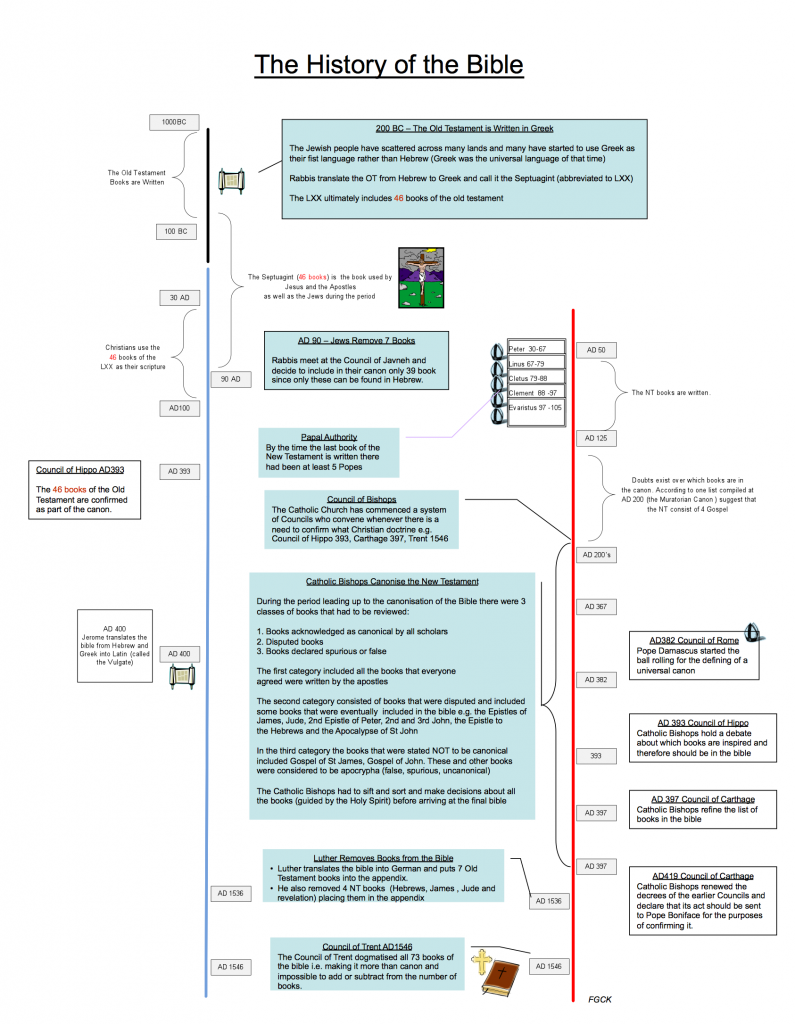For a larger image on PDF which you can see better, click here.
Two items I consider errors: 1) The Gospel of John was not considered spurious, and 2) there was no such things a “The Jewish Council of Javneh (or Jamnia)”. This is a fallacy as I wrote about here. Just so you know, I did not create this chart but used it because overall it is very helpful.




This Post Has 5 Comments
I have a pdf doc I created out on dropbox with a number statements by the councils pertaining to the canon of scripture from the council of Rome in 382 to Trent in 1546. There’s some additional misc stuff in there as well like a listing of some of the early English translations and lists of apocryphal and Gnostic writings.
https://db.tt/1Y4uTqZuZ3
Typo in first box: “fist language” s/b “first language”. May want to correct that.
Great graphic!
Thanks for putting this together! It’s very helpful.
In the box “Catholic Bishops Canonise the New Testament”, it says the Gospel of John was in the third category (false, spurious, uncanonical). I’m confused by this. Was there another Gospel of John?
Steve, I came here to mention the exact same issue that Martin brought up about the Gospel of John under the category of false, spurious, uncanonical. I have been printing this off and passing it around so I hope that this paper is not in error.
Steve Ray here:
I did not make that chart and I posted it based on another friends recommendation. If there are problems with it you have my apology. The issue of Saint John’s Gospel I’ll have to look at but I’m on the road right now. Sorry! More soon
Michael:
Noticed it too and put up an editorial note on St. John’s Gospel and about the “Council of Jamnia” that never existed. Thanks.
Comments are closed.